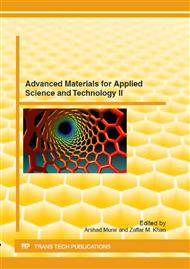p.1
p.9
p.15
p.25
p.37
p.43
p.53
p.63
Characterization of Hyperelastic (Rubber) Material Using Uniaxial and Biaxial Tension Tests
Abstract:
Hyperelastic material simulation is necessary for proper testing of products functionality in cases where prototype testing is expensive or not possible. Hyperelastic material is nonlinear and more than one stress-strain response of the material is required for its characterization. The study was focused on prediction of hyperelastic behavior of rubber neglecting the viscoelastic and creep effects in rubber. To obtain the stress strain response of rubber, uniaxial and biaxial tension tests were performed. The data obtained from these tests was utilized to find the coefficients of Mooney-Rivlin, Odgen and Arruda Boyce models. Verification of the behavior as predicted by the fitted models was carried out by comparing the experimental data of a planar shear test with its simulation using the same constitutive models.
Info:
Periodical:
Pages:
1-7
Citation:
Online since:
September 2012
Authors:
Keywords:
Price:
Сopyright:
© 2012 Trans Tech Publications Ltd. All Rights Reserved
Share:
Citation:


